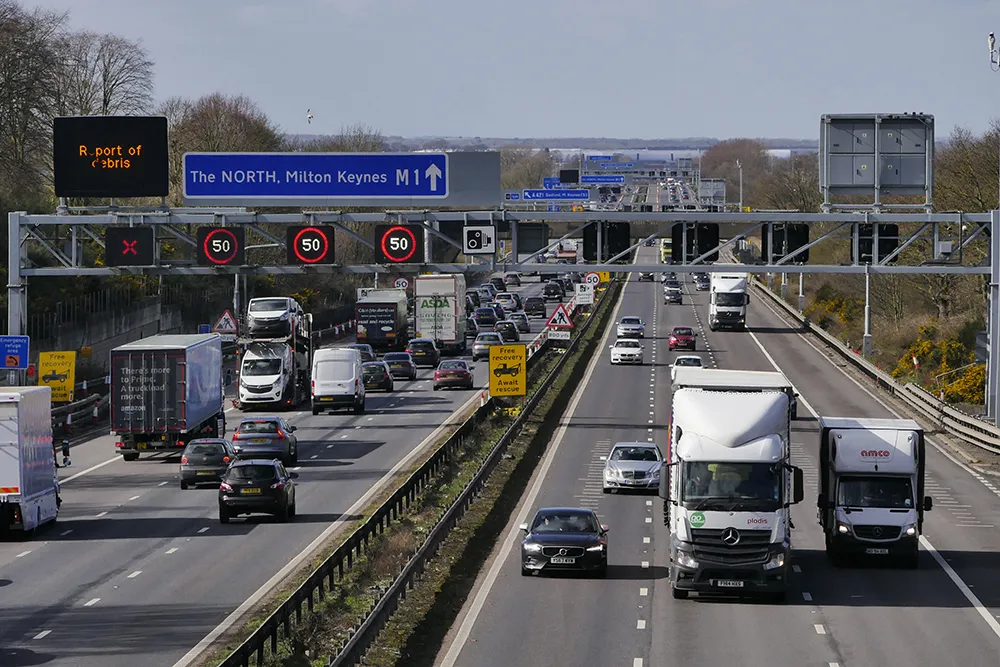Tachometer breaks, the mandatory rest stops commercial operators must take when driving, were the cause of nearly 1,700 road closures in one year alone, according to newly released figures from IAM Drive & Survive.
According to the Road Haulage Association, 85 per cent of everything sold in the UK is carried by truck at some stage of the supply chain, with this number set to increase as more retail purchases are made online in the run up to Christmas.
The numbers come from a Freedom of Information re
December 11, 2015
Read time: 2 mins
Tachometer breaks, the mandatory rest stops commercial operators must take when driving, were the cause of nearly 1,700 road closures in one year alone, according to newly released figures from IAM Drive & Survive.
According to the6985 Road Haulage Association, 85 per cent of everything sold in the UK is carried by truck at some stage of the supply chain, with this number set to increase as more retail purchases are made online in the run up to Christmas.
The numbers come from a Freedom of Information request to8101 Highways England into why motorways and major A roads were closed in 2014. Tachometer breaks are one of the top 25 reasons for lane closures, with 1,669 incidents last year.
IAM Drive & Survive says one of the main causes of this problem is road infrastructure – insufficient numbers of lay-bys, a lack of services for commercial drivers and the impact of long distances of road works.
It adds that drivers and their employers can play their part in ensuring their journeys are as smooth and safe as possible and that planning journeys in advance is key.
Researching routes with good facilities for drivers, looking up road closures and avoiding areas where traffic delays are common all help to avoid the need to stop in unsuitable locations.
Lesley Upham, IAM commercial director, said: “Designing the roads and facilities drivers need to operate safely is essential, but meeting this objective needs a long-term approach. Until then employers and drivers must remain aware of the challenges and plan their journeys accordingly. Radio road traffic reports and live traffic functions on satellite navigation systems have a role to play, but planning ahead and having an alternative route in mind is also essential.
“There is also a great responsibility on employers to limit the time-based pressure put on their drivers. Nothing will delay their operations as much as a serious incident and if an accident occurs procedures will be scrutinised.”
Other significant reasons for road closures include abnormal load (3,191) and vehicle shedding its load (6,648).
According to the
The numbers come from a Freedom of Information request to
IAM Drive & Survive says one of the main causes of this problem is road infrastructure – insufficient numbers of lay-bys, a lack of services for commercial drivers and the impact of long distances of road works.
It adds that drivers and their employers can play their part in ensuring their journeys are as smooth and safe as possible and that planning journeys in advance is key.
Researching routes with good facilities for drivers, looking up road closures and avoiding areas where traffic delays are common all help to avoid the need to stop in unsuitable locations.
Lesley Upham, IAM commercial director, said: “Designing the roads and facilities drivers need to operate safely is essential, but meeting this objective needs a long-term approach. Until then employers and drivers must remain aware of the challenges and plan their journeys accordingly. Radio road traffic reports and live traffic functions on satellite navigation systems have a role to play, but planning ahead and having an alternative route in mind is also essential.
“There is also a great responsibility on employers to limit the time-based pressure put on their drivers. Nothing will delay their operations as much as a serious incident and if an accident occurs procedures will be scrutinised.”
Other significant reasons for road closures include abnormal load (3,191) and vehicle shedding its load (6,648).








